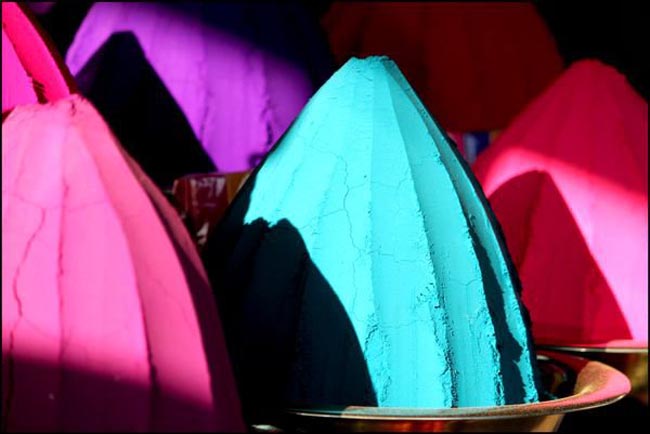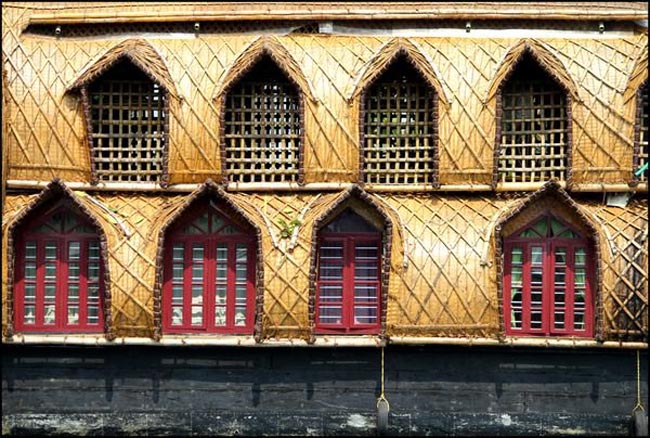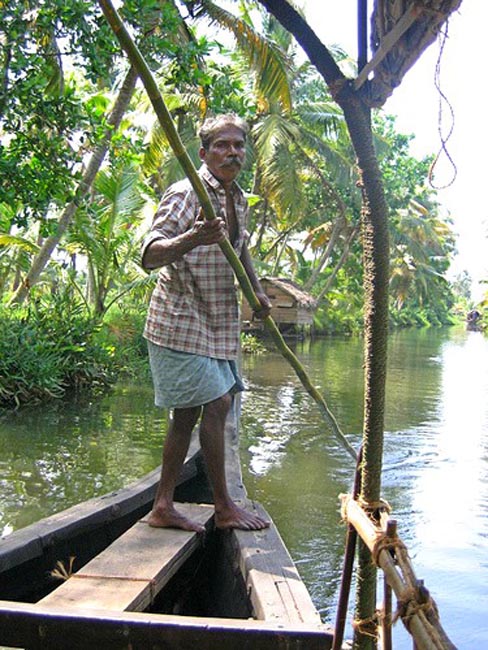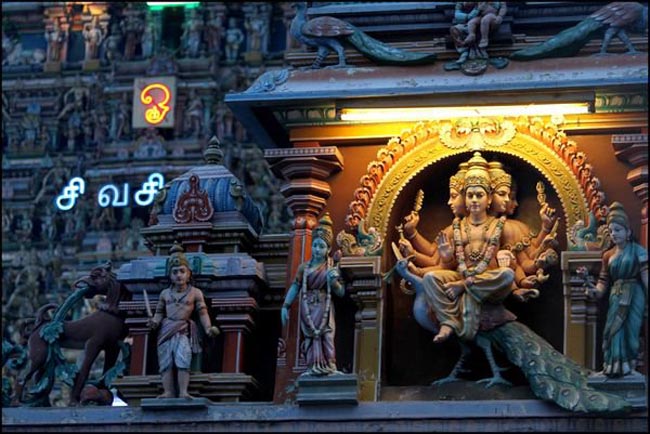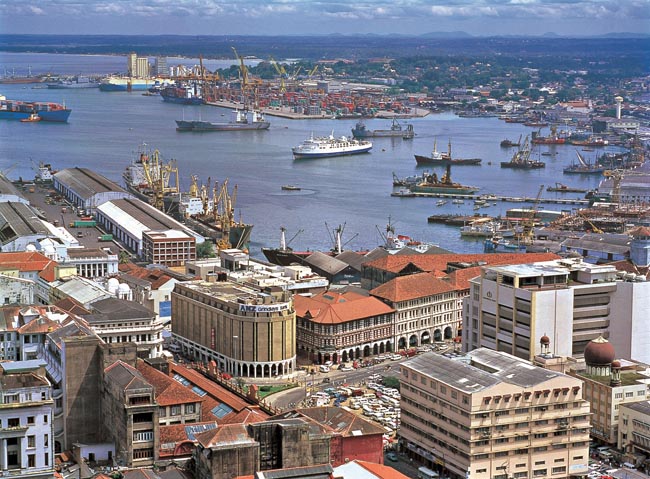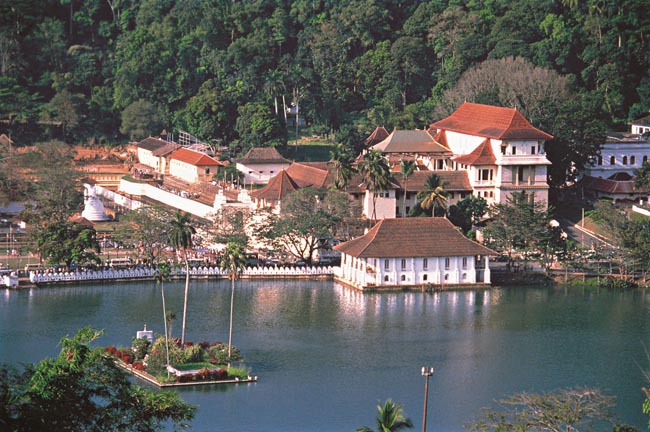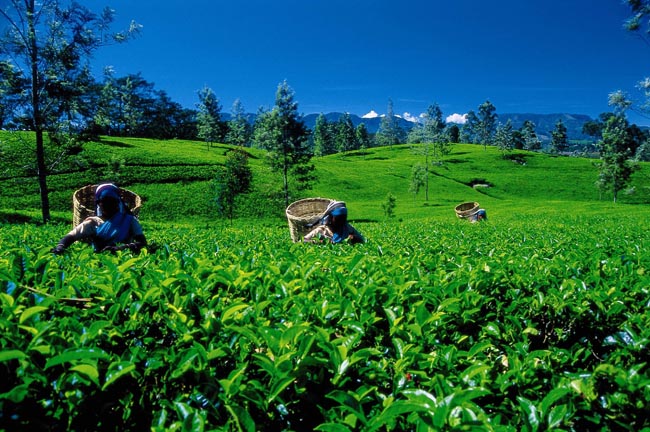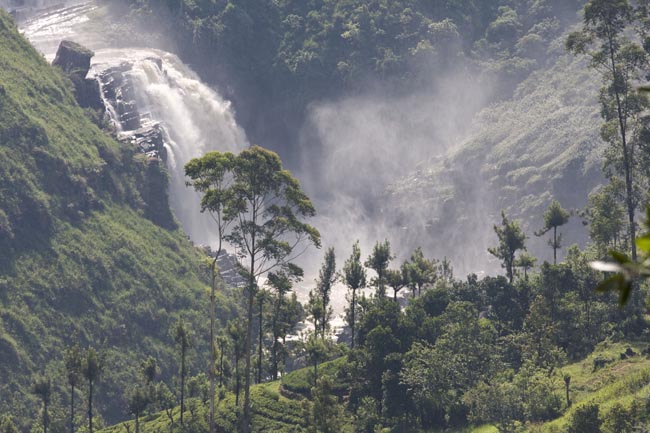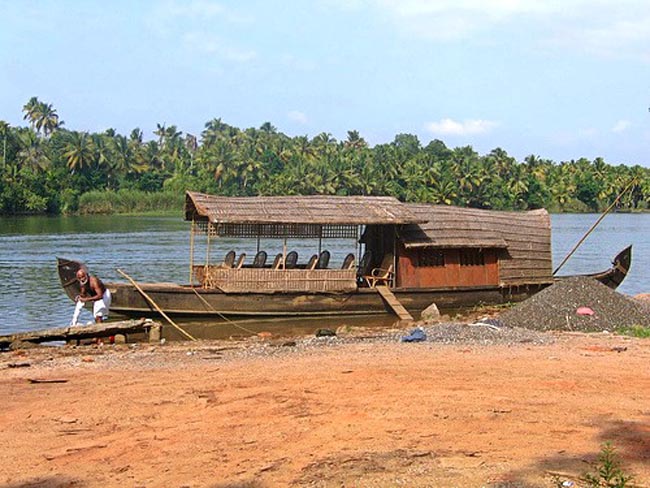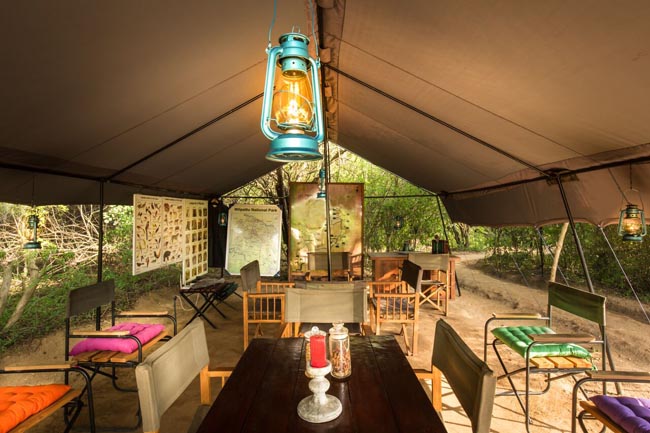Download Itinerary
Day 1 Arrive in Mumbai (Bombay)
Today we arrive in Mumbai.
NOTE: Your arrival in Mumbai today and transfer to the airport on day 2 will be provided by a local agent. You will meet your Tour Leader on Day 2 and continue with the group from there.
Overnight in Mumbai.
Included Meal(s): Dinner
Day 2 Mumbai: City Tour
Today we have a tour of Mumbai, the business capital of India.*
From humble obscure beginnings as a set of seven small islands, Mumbai has today risen to eminence as India's most important commercial and industrial centre. Haji Ali's Tomb and mosque are devoted to a Muslim saint who drowned here. They are reached by a long causeway, usable only at low tide. The Mahalaxmi Temple is the oldest in Mumbai and dedicated to the three goddesses whose images are found in the sea.
We visit the Bombay City Museum, one of the city's landmarks of cultural heritage. Visitors are struck by the life-like clay models on display, the artifact galleries with pottery, brass work, ivory, textiles and art miniatures. There is an exhaustive section on the city's historic growth and, the people who contributed to its development, including representations of the different communities who shaped the city.
The city has several fine examples of colonial architecture including the Afghan Memorial Church, established in 1847 which has Gothic arches and stained- glass windows; the Clock Tower - now called Rajabai Tower, the School of Art, built in the late 1800s, where Rudyard Kipling was born; Crawford Market which has bas-reliefs designed by Kipling's father; the massive Victoria Terminus, built of yellow sandstone and granite combined with polychromatic stones and blue-grey basalt and the Municipal Corporation building. Also of interest are the Hanging Gardens on Malabar Hill, from where you get a magnificent panoramic view of the metropolis and the Arabian Sea.
* The start time of today's tour may depend on the arrival of your Tour Leader and other group members arriving from Varanasi on a longer tour option.
Overnight in Mumbai.
Included Meal(s): Breakfast and Dinner
Not finding what you're looking for?
Our specialists can take away the stress and create a private custom tour tailored to your exact interests and budget.
Day 3 Mumbai - Aurangabad: Ellora
Early morning transfer to the airport for the flight to Aurangabad. We are met on arrival and transferred to the hotel (Check-in at noon).
In the afternoon visit Ellora, which has 34 rock-cut temples representing the Buddhist, Jain and Hindu Brahmanic faiths. All the cave temples are man-made. The artists who flocked to these remote areas from vast distances literally hammered monuments out of rock, working usually from the top of the temple and moving downwards, to eliminate the need of scaffolding. The centre piece at Ellora is the Kailash Temple. In its galleries are recreated various scenes from Shiva myths. Although the carvings are of three religions, the structures are often similar. However, differences are visible -- the Jain carving are ascetic, the Buddhist caves, inspired by Buddhism's attempt at populism, show an austere richness.
Overnight in Aurangabad.
Included Meal(s): Breakfast and Dinner
Day 4 Aurangabad: Ajanta Caves
After breakfast take a day trip to Ajanta, located 100 km from Aurangabad. The 30 caves not only contain sculptures but remarkably preserved frescos as well. The Ajanta caves are in a secluded site; because of this they were virtually forgotten and discovered accidentally only in the 19th century. The frescos and sculptures are startling in the voluptuousness of much of the imagery for Buddhism was a religion of denial. The Buddha forbade the worshipping of idols and the wearing of colourful clothing or any ornamentation, which might excite desire. After the Buddha's death, its preachers began to tell stories of Buddha's earlier incarnations. Thus began the process of Buddhism acquiring some of the sensuousness of Hinduism. Return to Aurangabad in the late afternoon.
Overnight in Aurangabad.
Included Meal(s): Breakfast and Dinner
Day 5 Aurangabad - Mumbai - Goa
We have a morning flight to the former Portuguese enclave of Goa (via Mumbai).
Goa achieved fame when Portuguese navigator Vasco da Gama sailed down the Malabar Coast in 1498 in search of "Christians and spices." Although he found neither, Goa became a Portuguese colony separated from the rest of India by the jungle covered hills of the Western Ghats. Goa's heartland and population is located in the alluvial strip inland from the beaches, a lush patchwork of paddy fields, coconut plantations, whitewashed churches and gently meandering rivers.
Overnight in Goa.
Included Meal(s): Breakfast and Dinner
Day 6 Goa: City Tour
This morning we include a sightseeing tour of Panjim. Proceeding to old Goa, we visit the Basilica of Bom Jesus, built in 1605 by the Jesuit fathers and still the most important church in Goa. Enshrined in a silver casket in one of its chapels, is the body of Saint Francis Xavier. Across the street is the Se Cathedral with an imposing vaulted roof, massive pillars and fourteen magnificent altars. Later we visit the Convent of St. Francis D'Assisi and the Chapel of St. Catherine.
This afternoon is free to enjoy this laid-back town.
Overnight in Goa.
Included Meal(s): Breakfast and Dinner
Day 7 Goa - Bangalore - Srirangapatnam - Mysore
Today we fly to Bangalore and continue by road to Mysore. Until independence, Mysore was the seat of the Maharajas of Mysore, a princely state covering about a third of present day Karnataka. En route we visit Srirangapatnam.
Srirangapatnam derives its name from Lord Ranganatha. We visit the 1,000 year old temple dedicated to Ranganatha, proclaiming the historical background of the city. Besides the mythological association of the town, the town has assumed significance for the heroism of Hyder Ali Khan and Tipu Sultan in fighting the British in association with the French. It was also the capital of the Vijayanagar representatives and later Mysore rulers, during whose period
Srirangapatna had witnessed glorious days.
Overnight in Mysore.
Included Meal(s): Breakfast and Dinner
Day 8 Mysore: City Tour
Today we tour this historic city, including the spectacular Maharaja's Palace. This charming, easy-going city has long been a favourite with travellers -- it's a manageable size, enjoys a good climate and has chosen to retain and promote its heritage rather than replace it. The city is famous for its silk and is also a thriving sandalwood and incense centre.
Overnight in Mysore.
Included Meal(s): Breakfast and Dinner
Day 9 Mysore - Belur & Halebid - Hassan
Today we travel to Hassan via Belur and Halebid.
Belur and Halebid were both capitals of The Medieval Hoysala kings who built the exquisitely carved temples in the 12th & 13th centuries. Belur is famous for it Hoysala architecture; its Temple of Lord Channakeshava is embellished with carving which has few equals in the world. It took 103 years to complete and you can see why. The facade of the temple is filled with intricate sculptures and friezes with no portion left blank: elephants, episodes from the epics, and sensuous dancers.
Halebid was the seat of Hoysala Kingdom; its great Hoyaleswara Temple was built in the typical Hoysala style. The temple, dating back to the 12th century, is astounding for its wealth of sculptural details. The walls of the temple are covered with an endless variety of gods and goddesses, animals, birds and dancing girls. Yet no two facets of the temple are the same. This magnificent temple -- guarded by a Nandi Bull -- was never completed, despite 86 years of labour.
We continue to Hassan.
Overnight in Hassan.
Included Meal(s): Breakfast and Dinner
Day 10 Hassan - Bangalore: City Tour
Today we travel by road to Bangalore, the cosmopolitan capital of Karnataka.
Bangalore is called the Garden City for it's delicate blossoms and greenery that impart a unique beauty to this lovely city. The weather is the city's best feature, with pleasant summers and bearable winters. Bangalore, which literally means the 'town of baked beans', was founded by Kempe Gowda, a chieftain of the Vijayanagar Empire, around the 16th century. He built four towers in four directions to specify its boundaries.
Today we tour Bangalore where we see, among other things, government buildings and the Maharaja's Palace.
Overnight in Bangalore.
Included Meal(s): Breakfast and Dinner
Day 11 Bangalore - Fly to Kochi - Allaphuza: Houseboat
Early this morning we fly to Kochi (Cochin).
We continue by road to Alappuzha (Alleppey), known as the "Venice of the East", situated on Vembanad Lake, the longest in India. A maze of canals and a network of bridges give this busy commercial town its descriptive sobriquet. Alleppey is known for its coir, the retted fibre of the coconut husk and for black pepper.
Today we board our houseboat for a very special Kerala delight -- a slow boat through its forests and palm-shaded canals. We take a leisurely cruise on the beautiful backwaters, enjoying the magnificent scenery along the waterways and stopping to admire what history and religion have left along the way.
THE HOUSEBOAT will be approx 60 feet long and 13 feet wide in the middle. There are comfortable beds, and traditional lanterns, and air-conditioning. There will be a sundeck for daytime relaxation. The boats are made of local natural fibres that truly echo the villagers harmony with the natural surroundings. As your oarsman slowly and silently propels us along the backwaters, we will enjoy the magnificent scenery along the waterways. We will stop to view working villages and witness locals fishing, swimming, crafting, and bathing (most boats will have oarsman though some will be motorized with a silencer on the motor).
NOTE: Single cabins are NOT available on the houseboat. Single supplements reflect sharing for this one night.
Overnight Kerala Houseboat.
Included Meal(s): Breakfast, Lunch and Dinner
Day 12 Return to Kochi: City Tour
Today we return to Kochi.
The history of European involvement in Kochi, from the early sixteenth century onwards, is dominated by the aggression of, successively, the Portuguese, Dutch and British, competing in their desire to control the port and its lucrative spice trade. From 1800, the state of Cochin was part of the British Madras Presidency; from 1812 until Independence in 1947, its administration was made the responsibility of a series of diwans, or financial ministers. In the 1920s, the British expanded the port to make it suitable for modern ocean-going ships; extensive dredging created Willingdon Island, between Ernakulam and Fort Cochin.
On arrival we have a tour of Kochi, including: Chinese fishing Nets -- A legacy of one of the earliest visitors to the Malabar coast, these nets are unmistakable as one enters the harbour. Records show that they were first erected between AD 1350 and 1450. Constructed out of Teak wood and Bamboo poles, they work on the principle of balance. The best place to watch is from Vasco Da Gama square, a narrow promenade that parallels the beach with little stalls that serve fresh seafood, tender coconuts and so on.
Santa Cruz Basilica: Built by the Portuguese, the church was elevated to a Cathedral by the Pope Paul IV in 1558. Spared by the Dutch conqueror of Cochin who destroyed many Catholic buildings in 1663, it later fell into the hands of the British who demolished it when they took over Cochin in 1795. For almost 100 years there was no church on the site, until the Bishop Dom Gomez Vereira commissioned a new building in 1887.
Overnight in Kochi.
Included Meal(s): Breakfast and Dinner
Day 13 Kochi - Fly to Chennai: City Touring
Today we fly to Chennai (Madras).
Chennai, the capital of Tamil Nadu, is, like Mumbai and Calcutta, a comparatively modern creation. It was founded by the British East India Company in 1639, on a narrow five-kilometre strip of land between the Cooum and Adyar rivers, a few kilometres north of the ancient Tamil port of Mylapore and the Portuguese settlement of San Thome, established in 1522. The British were repeatedly challenged by the French who, in 1746, destroyed much of the city.
Robert Clive ("Clive of India"), then a clerk, was taken prisoner, an experience said to have inspired him to become a campaigner. Clive was among the first to re-enter Chennai when it was retaken three years alter, and continued to use it as his base. Following this, fortifications were strengthened and the British survived a year-long French siege (1759), completing the work in 1783. By this time, however, Calcutta was in the ascendancy and Madras lost its national importance.
We will visit Fort St George, once a stronghold of the British; St Mary's Church, the oldest Anglican church in India; the San Thome Cathedral where the remains of St Thomas the Apostle are believed to have been buried; the Mylapore Temple dedicated to Lord Shiva and the Light House which is the only one of its kind in the world to be located on top of a High Court. We drive along the Marina, the thirteen kilometre-long beach which, with its shining white sands, aqua blue sea and violet lights at night, is the pride of Chennai.
Overnight in Chennai.
Included Meal(s): Breakfast and Dinner
Day 14 Chennai & Mahabalipuram
Today, we embark on a scenic drive of approximately 60 kilometers to Mahabalipuram, a coastal town steeped in history. This ancient seaport, once a thriving center of the Pallava dynasty, is renowned for its stunning rock-cut temples and intricate sculptures dating back to the 7th century.
The temples of Mahabalipuram are unique for their simplicity and their depiction of everyday life, offering a fascinating glimpse into the culture and society of the Pallava era. We'll explore these architectural marvels, marveling at the skill and artistry of the ancient craftsmen.
After a leisurely lunch by the serene Bay of Bengal, we'll return to Chennai, carrying with us the enduring beauty and historical significance of Mahabalipuram.
Overnight in Chennai.
Included Meal(s): Breakfast and Dinner
Day 15 Chennai, India - Colombo, Sri Lanka - Negombo
Today's city sightseeing of Chennai includes a visit to the National Art Gallery and Museum, which has a selection of ancient paintings from almost all schools of art, as well as a section entirely devoted to modern art. We will visit Fort St George, once a stronghold of the British; St Mary's Church, the oldest Anglican church in India; the San Thome Cathedral where the remains of St Thomas the Apostle are believed to have been buried; the Mylapore Temple dedicated to Lord Shiva and the Light House which is the only one of its kind in the world to be located on top of a High Court. We drive along the Marina, the thirteen kilometre-long beach which, with its shining white sands, aqua blue sea and violet lights at night, is the pride of Chennai.
After dinner we board our evening flight to Colombo, Sri Lanka and transfer to Negombo, situated nearby the International Airport and approximately 35km (22 mi) north of Colombo. Negombo town is a historically interesting place that has been strongly influenced by the Catholic Church. The Dutch captured the town from the Portuguese in 1640, lost it again in the same year, and then captured it again in 1644. The British then took it from them in 1796 without a struggle. Negombo was one of the most important sources of cinnamon during the Dutch era.
Overnight in Negombo.
Included Meal(s): Breakfast and Dinner
Day 16 Colombo Area - Muthurajawela Nature Reserve - Anuradhapura
This morning we make the 180 km (110 mile) drive to Anuradhapura, the first capital of Sri Lanka.
En route we take a boat ride through the Muthurajawela Nature Reserve. This protected area of wetland is thriving with bird life, with 126 resident species and 40 species which migrate here. The boat ride provides a view of Sri Lankan wetlands as never seen before. Imagine listening to the chorus of feathered creatures, watching the water lilies dancing on the tropical sun, monkeys swinging on treetops and crocodiles moving stealthily in water.
We continue to Anuradhapura, arriving in the afternoon.
Overnight near Anuradhapura.
Included Meal(s): Breakfast and Dinner
Day 17 Anuradhapura - Dambulla
This morning we visit a selection of the most remarkable sights of Anuradhapura. As per written records Anuradhapura was made royal capital by the king Panduk Anhaya in 380 BC. It remained residence and royal capital for 119 successive Singhalese kings till the year AD 1000 when it was abandoned and the capital moved to Polonnaruwa. You will see some of the most famous as well as the tallest dagoba of Sri Lanka, remains from palaces, temples, monasteries, ceremonial baths and the temple of the holy Bo-tree. This tree was grown from a sapling of the very tree under which more than 2500 years ago the Buddha found enlightenment.
We continue to Dambulla and have a tour of its major attractions, which are spread over 5 caves containing statues and paintings. Since it's founding in the first century BC by King Valagamba, many improvements and additions have been carried out to the collection. Hindu statues are believed to be of the 12 century AD and the latest paintings are of the late 18-century. Dambulla is a unique and important historical site because of the amalgamation of material from many eras.
Overnight in Dambulla.
Included Meal(s): Breakfast and Dinner
Day 18 Dambulla - Sigiriya - Polonnaruwa - Dambulla
Taking advantage of cooler morning temperatures, we will have a tour of Sigiriya. The complex lies on the steep slopes and at the summit of a granite peak standing some 370 m (1,220 feet) high. This is the earliest surviving royal palace in Sri Lanka, with several chambers and meticulously planned water gardens, the earliest such gardens found in Asia. The Mirror Wall, which had been exposed to elements for over fifteen centuries, still carry some of the original sheen that has given it the name. This archaeological site, unparalleled in South Asia, has been declared a World Heritage Site.
We then drive to Polonnaruwa for a visit of the well-preserved remains of capital of the Singhalese kings from the 11th to the 13th century. We see the excavations: Temples, dagobas, the royal palace, the royal library. The most famous Singhalese king, Parakrama Bahu the Great (1153-1186), built in the environs of Polonnaruwa, an impressive irrigation system with many artificial tanks interconnected with irrigation channels.
Overnight in Dambulla.
Included Meal(s): Breakfast and Dinner
Day 19 Dambulla - Kandy
This morning we have a tour of a local spice garden. A local guide will most likely show us custard apples, jackfruit, cocoa, cardamom, pineapples, lemon grass, wild asparagus, nutmeg, curry leaves, cinnamon, ginger, vanilla plant, coco, aloe vera, etc. We continue our travel through the interior of the island, past paddy fields, palm groves and coconut plantations.
Our journey continues via a road that begins to ascend gradually. After 92 km / 58 miles (90 minutes), we arrive at the old royal city of Kandy, situated at 500 m (1,640 feet) above sea level and beautifully nestled between green hills. In its very centre lies a small artificial lake and palace of the last Singhalese king which has become a temple and the holiest shrine in Sri Lanka and where the tooth relic of the Lord Buddha is highly venerated.
On arrival we will drive around the lake and visit the National Museum. This evening we shall pay a visit to the Temple of the Holy Tooth followed by an opportunity to attend a dance performance (subject to availability) where we will see the famous Kandyan dance as well as up-country and devil dances.
Overnight in Kandy.
Included Meal(s): Breakfast and Dinner
Day 20 Kandy: Botanical Garden - Nuwara Eliya
After breakfast we will visit the world-famous Botanical Garden at Peradeniya. The park dates back to 1371 under the reign of King Vikrama Bahu III when he held court here. The English put the cornerstone of the present garden in 1821. During the Second World War the garden served as the headquarters of Earl Mountbatten, the supreme commander of the allied forces in Southeast Asia who later became the last Viceroy of India. In the garden we find an immense variety of orchids, spice trees, palms, bushes, as well as tropical plants and flowers of all types.
We then travel 77 km (48 miles) to Nuwara Eliya. The road ascends steadily and shortly before reaching Nuwara Eliya, we will have climbed 1500 m (4,920 feet). You are now in the tea-country; wherever you look, you will see tea plantations, the rich full green of thousands and thousands of tea bushes. Occasionally you can see a few rice fields and near villages, vegetable plantations or gardens. En route we visit a tea factory and plantation.
We tour the resort town of Nuwara Eliya, situated at 2070 m (6,790 feet) above sea level, lies on a little lake and is surrounded by mountains covered over and over by tea bushes. The town itself was the favourite hill station of the British who set it up to look like a misplaced British village. The charming, old, pink-brick post office, the English country house-like Hill Club with its hunting pictures, mounted hunting trophies and fish, the 18-hole golf course (said to be one of the finest in Asia), and even the well-stocked trout streams speak of the area's English past.
Overnight in Nuwara Eliya.
Included Meal(s): Breakfast and Dinner
Day 21 Nuwara Eliya - Colombo
We have an early start for our drive back to Colombo to allow us time to have a panoramic tour of the city.
Colombo was probably known to Roman, Arab, and Chinese traders more than 2,000 years ago. Muslims settled there in the 8th century and controlled much of the trade between Sinhalese kingdoms and the outside world. The Portuguese arrived in the 16th century and built a fort to protect their spice trade. The Dutch captured the city in the 17th century. The British made the city the capital of their crown colony of Ceylon in 1802. The University of Sri Lanka, several colleges, an observatory, a national museum, and numerous churches, mosques, and Buddhist and Hindu temples are all located in and around Colombo; on the outskirts are two major Buddhist universities.
Overnight in Colombo.
Included Meal(s): Breakfast and Dinner
Day 22 Departure
Departure from Colombo.
BON VOYAGE!
Included Meal(s): Breakfast
Inclusions
Breakfast and dinner are included daily, one lunch. Evening meals on tour will be taken mostly at hotels. In some locales we endeavour to break up the buffet dinners with a meal at a local restaurant but, overall, the imperatives of hygiene and quality dictate hotel meals. All transport, accommodation, sightseeing and entrance fees are included for sites noted as 'visited' in the detailed itinerary. Gratuities for drivers, restaurant staff, porters, local guides. Airport transfers for land & air customers arriving / departing on tour dates.
Exclusions
International airfare to/from the tour. Tour Leader gratuities, lunches, drinks, personal items (phone, laundry, etc), domestic and international (if applicable) air taxes, visa fees, and any excursions referenced as 'optional'. Airport transfers for Land Only customers. Optional trip cancellation insurance. Our post-reservation trip notes offer further guidance on shopping, not included meals, visas.
Seasonality and Weather
For most of the country, November-March is (by far) the best time to visit. During those months, temperatures range from 40-70 F / 5-20 C in the north to 65-95 F/19-37 C in the south. March-June is dry and exceedingly hot (85-110 F/30-44 C), and June-October is monsoon time (20-80 in/50-200 cm of rain will fall in one season). While conditions can vary widely, you must be prepared for some heat. SRI LANKA: Upland areas are cooler and more temperate and coastal areas are cooled by sea breezes. There are 2 monsoons, which occur May-Jul & Dec/Jan. The best time to travel weather wise is between October and March.
Transport and Travel Conditions
Ground transport via private air-conditioned motor coach. Internal flights via scheduled carriers. The tour is not physically strenuous though it is busy; you must be prepared for some early starts, be steady on your feet, and be able to endure some heat and long days. We have numerous walking tours and visit several sites that are LARGE with steps and uneven surfaces. Porters are available at hotels but you must be able to manage with your baggage at airports.
Am I suitable for this tour? Please refer to our self-assessment form.
Activity Level: 1
No particular physical activity is involved other than town/city walks and short walks to dinners and sites of interest, some of which are large.
To learn more about the Activity levels, please visit our tour styles page.
Accommodation
Accommodation in air-conditioned 3-4 star hotels. Hotel properties are mostly modern and Western style. Some are older, character properties with simpler rooms and perhaps no elevators. Our accommodation in Mumbai cannot be considered "central" in a conventional sense. Mumbai is a huge sprawling city with many districts and centres of interest / business; our hotel is well-located for what we want to accomplish on our city coach tour. Some properties have swimming pools. Laundry services at most hotels for a modest cost. Single rooms are limited and possibly smaller than twins. Porters are generally available (see 'Inclusions').
THE HOUSEBOAT will be approx 60 feet long and 13 feet wide in the middle. There are comfortable beds, and traditional lanterns, a sundeck for daytime relaxation. Some of the houseboats have the provision for air-conditioning, but most travellers do not care for the all-night gasoline engine noise required to run the units. Most people find that the peace and quiet, and comfort provided by a fan, are preferred. NOTE: Single cabins are NOT available on the houseboat. Single supplements reflect sharing for this one night.
Staff and Support
Tour Leader throughout, local drivers, local guides at various locations.
Group Size
10-18 (plus Tour Leader)
Regions visited: South Asia
Countries visited: India and Sri Lanka
*The red tour trail on the map does not represent the actual travel path.
The following is a list of sample hotels at some locations included on this tour. The hotels shown here are meant to provide a general sense of the standard of hotel we usually aim for; they are not necessarily confirmed for your chosen departure.














... as a Portuguese hamlet, with a Mediterranean influence, by world-renowned architect Charles Correa, Cidade de Goa, our beach resort in Goa, is a blend of luxury, warmth, and the laidback elegance of susegad. It embodies the heart of Goa, both in terms of location and vibe. One is welcomed by stunning views of the sea, manicured greens, and vibrant medleys of oranges, yellows, and blues.


































